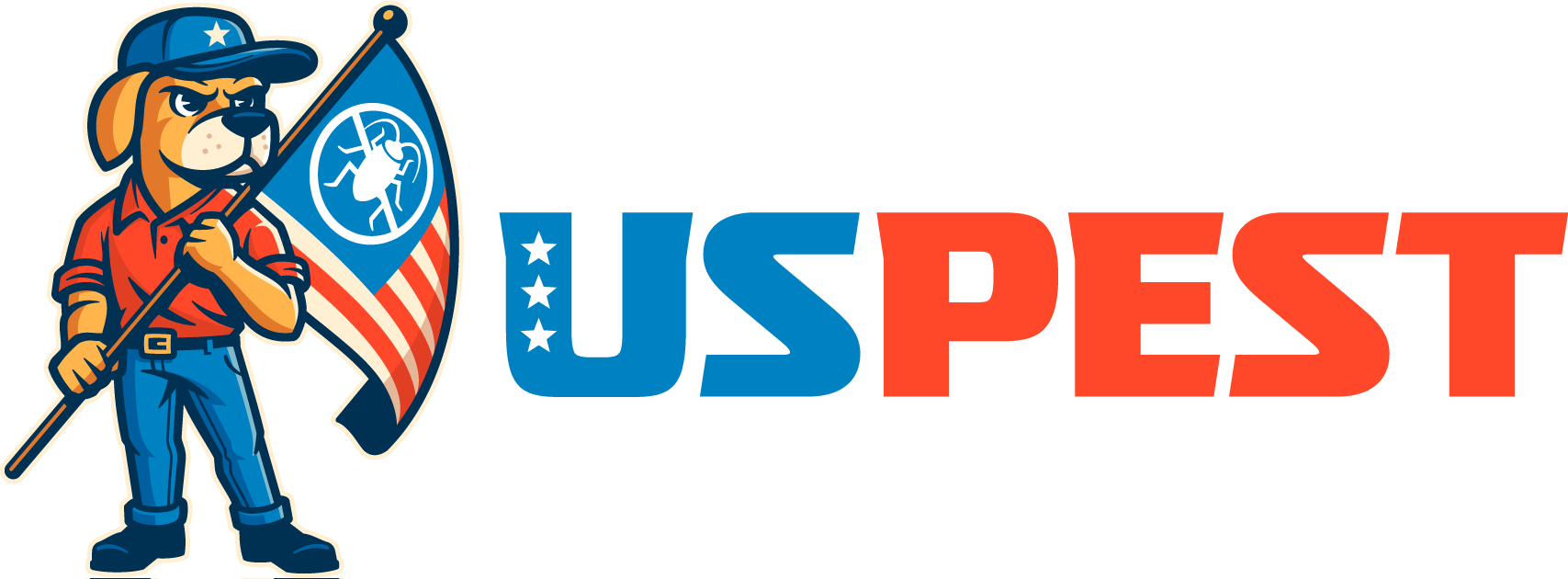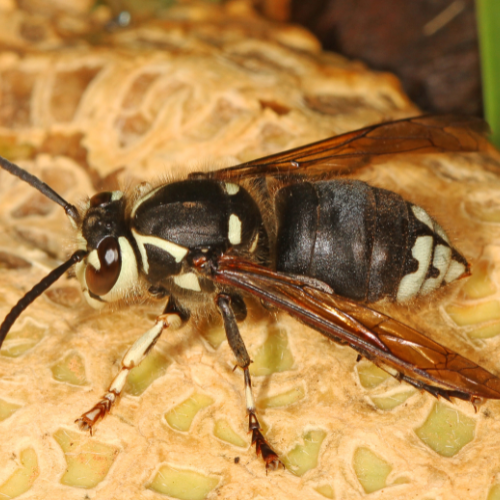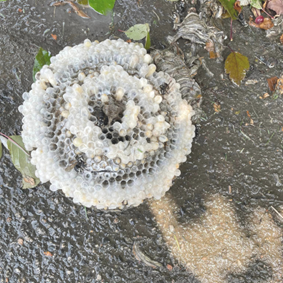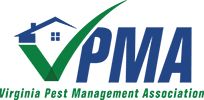Wasp & Hornet Control
Wasp & Hornet Control Services in Richmond & Henrico, VA
Bees and wasps can pose a serious threat when they invade your property. At US Pest Control, we offer professional bee and wasp control services to protect your home and family in Richmond, VA, and Henrico, VA. Whether the nest is in the ground or attached to your home, our experts will safely and effectively remove it, ensuring these stinging pests don’t return.
Why Are Wasps & Hornets Attracted to Homes?
Bees and wasps are naturally drawn to environments that provide easy access to food, shelter, and nesting sites. Here are some common reasons why they may be targeting your property:
- Food Sources:
- Bees: Attracted to flowering plants, fruit trees, and sugary substances like sodas, juices, and food scraps.
- Wasps: Seek protein-rich food sources, including garbage, pet food, and outdoor dining areas.
- Nesting Locations:
- Bees and wasps look for safe, undisturbed areas to build their nests, including:
- In the Ground: Wasps like yellowjackets often nest underground in burrows or cavities.
- On Structures: Paper wasps and honeybees commonly build nests on eaves, soffits, attics, or even inside wall voids.
- Warmth and Shelter:
- Homes and properties with cracks, crevices, or overhangs provide excellent protection from weather and predators.
The Dangers of Bees and Wasps Near Your Home
While bees play a vital role in pollination, having a nest near your home can lead to:
- Painful stings, which can be dangerous for those allergic to bee or wasp venom.
- Aggressive behavior, especially when nests are disturbed.
- Risk of structural damage from nests built inside walls or roofs.
How US Pest Control Manages Bee & Wasp Infestations
Our bee and wasp control program in Richmond and Henrico, VA, is designed to remove the problem safely and prevent future infestations. Here’s how we do it:
1. Comprehensive Inspection
- Our technicians will assess your property to identify:
- The type of stinging insect (bee, wasp, or hornet).
- The nest’s location (ground, structural, or hidden).
- Factors attracting the pests to your property.
2. Nest Removal Approach
We take a targeted and safe approach to removing nests, whether they are:
- In the Ground:
- For ground-nesting wasps, such as yellowjackets, we treat the nest entrance with specialized products to eliminate the colony.
- Once the wasps are neutralized, we safely remove the nest to prevent reinfestation.
- Attached to the Structure:
- For nests built on your home (e.g., under eaves or in wall voids), we use precision treatment methods to ensure all bees or wasps are eliminated.
- After treatment, we physically remove the nest and seal potential entry points to stop future activity.
3. Preventative Measures
- We provide recommendations to reduce the likelihood of future infestations, such as sealing cracks, reducing food sources, and maintaining your property’s landscaping.
Eco-Friendly Approach (for Bees):
- If the infestation involves honeybees, we work with local beekeepers or specialists to relocate the hive whenever possible, preserving their essential role in pollination.
Why Choose US Pest Control in Richmond & Henrico, VA?
- Local Expertise: We understand the unique pest challenges faced by homes and businesses in Richmond and Henrico, VA.
- Safe & Effective Methods: Our team uses safe and proven techniques to eliminate wasps and bees while minimizing risks to your family.
- Comprehensive Services: From inspections to nest removal and prevention, we offer full-service pest control for lasting results.
- Customer Satisfaction Guarantee: Your safety and satisfaction are our top priorities.
Common Bees & Wasps We Handle
We are experienced in controlling all types of stinging pests, including:
- Yellowjackets (ground nests).
- Paper Wasps (structural nests).
- Hornets (aerial nests).
Yellow Jackets
Appearance: Recognizable by their yellow and black coloration, similar to honeybees.
Nesting: Build papery nests, often in the ground or other secluded areas.
Behavior: Aggressive when disturbed, especially around their nests.
Diet: Feed on various insects and are attracted to sugary substances.
Paper Wasps
Appearance: Slender with long legs, often brown or reddish in color.
Nesting: Construct paper-like nests usually attached to eaves or other protected structures.
Behavior: Generally less aggressive unless provoked. Can sting if they feel threatened.
Diet: Primarily feed on nectar and insects.
Hornets (Bald Faced, European)
Bald Faced Hornets
Appearance: Large and robust, with black and white coloration.
Nesting: Build large, enclosed paper nests, often high in trees.
Behavior: Can be aggressive when defending their nest.
Diet: Predatory, feeding on insects.
European Hornets
Appearance: Larger than yellow jackets, with brown and yellow markings.
Nesting: Build nests in hollow trees, attics, or wall voids.
Behavior: Generally less aggressive than yellow jackets but can defend their nest vigorously.
Diet:
Feed on nectar, fruits, and insects.
Understanding the habits and behaviors of these different wasp species is crucial for effective pest management and ensuring the safety of individuals around their nesting sites. Professional pest control services can provide solutions tailored to specific wasp infestations.
The Difference Between Ground Bees & Carpenter Bees
Ground Bees:
Nesting: Ground bees, also known as solitary bees, construct their nests in the soil.
Appearance: They come in various sizes and colors, often with a furry or metallic appearance.
Behavior: Generally solitary, ground bees are not aggressive. They prefer to forage for pollen and nectar alone.
Nesting Sites: Nest entrances can be identified by small mounds of soil with a hole in the center.
Carpenter Bees:
Nesting: Carpenter bees are so named because they excavate tunnels in wood to build their nests.
Appearance: Resemble bumblebees but often have a shiny, hairless abdomen.
Behavior: While male carpenter bees can be territorial and hover around nests, they don’t have stingers. Females, who do have stingers, are usually less aggressive.
Nesting Sites: Carpenter bees often target softwoods, including deck railings, eaves, and other wooden structures.
Differences:
Nesting Behavior: Ground bees nest in the soil, while carpenter bees create nests in wood.
Social Structure: Ground bees are generally solitary, while carpenter bees can be solitary or exhibit simple forms of social behavior.
Aggressiveness: Ground bees are typically non-aggressive, while carpenter bees might show aggression if they feel threatened, but the males lack stingers.
Notice Regarding Honey Bees:
At U.S Pest Control, we are committed to environmental responsibility and the well being of pollinators. We do not exterminate or harm honey bees. If you have a situation involving honey bees, we encourage you to contact local beekeeping associations or specialists who can safely relocate and manage these important pollinators. Our pest control services are designed to address issues with other pests while prioritizing the conservation of beneficial species like honey bees. Feel free to reach out if you have any questions or need assistance with other pest concerns.
What damage can bees and wasps do to my home?
A Bee or Wasp infestation in the home means an increased risk of dangerous stings for you and your family. Moreover, untreated bee and wasp hives have the potential to cause structural damage to walls, chimneys, and roofs of homes.
How do I prevent bee and wasp infestations?
The best way to prevent a bee and wasp infestation is proactivity. Investigate your property, backyard, and even crawlspaces for any signs of a bee infestation. Make sure to cover any holes in your ground as they are a perfect spot for a wasp nest. Take care that there are no food sources on your property for extended periods of time and cover all trash and compost bins.
Some types of bees and wasps are known to sting unprovoked. If you are experiencing a bee or wasp infestation, handling a bee problem on your own is not recommended. Call us today to schedule our professional and experienced team to take care of your bee problem safely.












